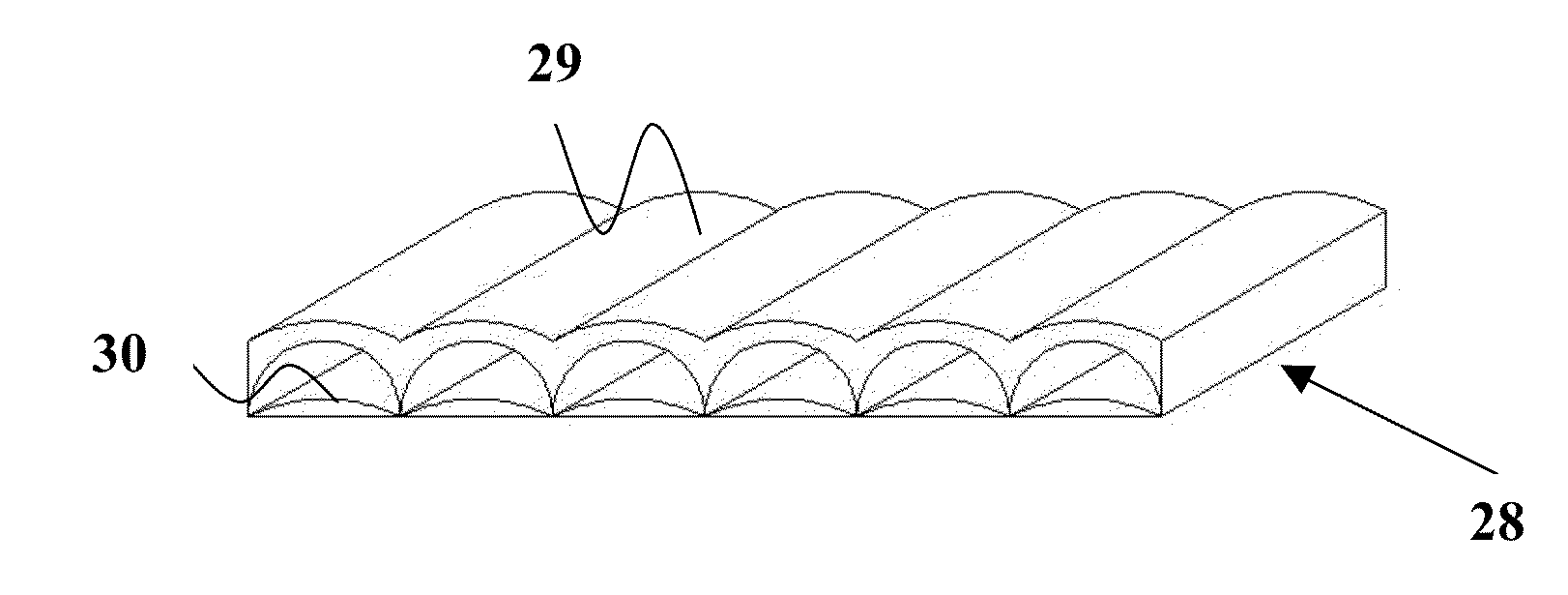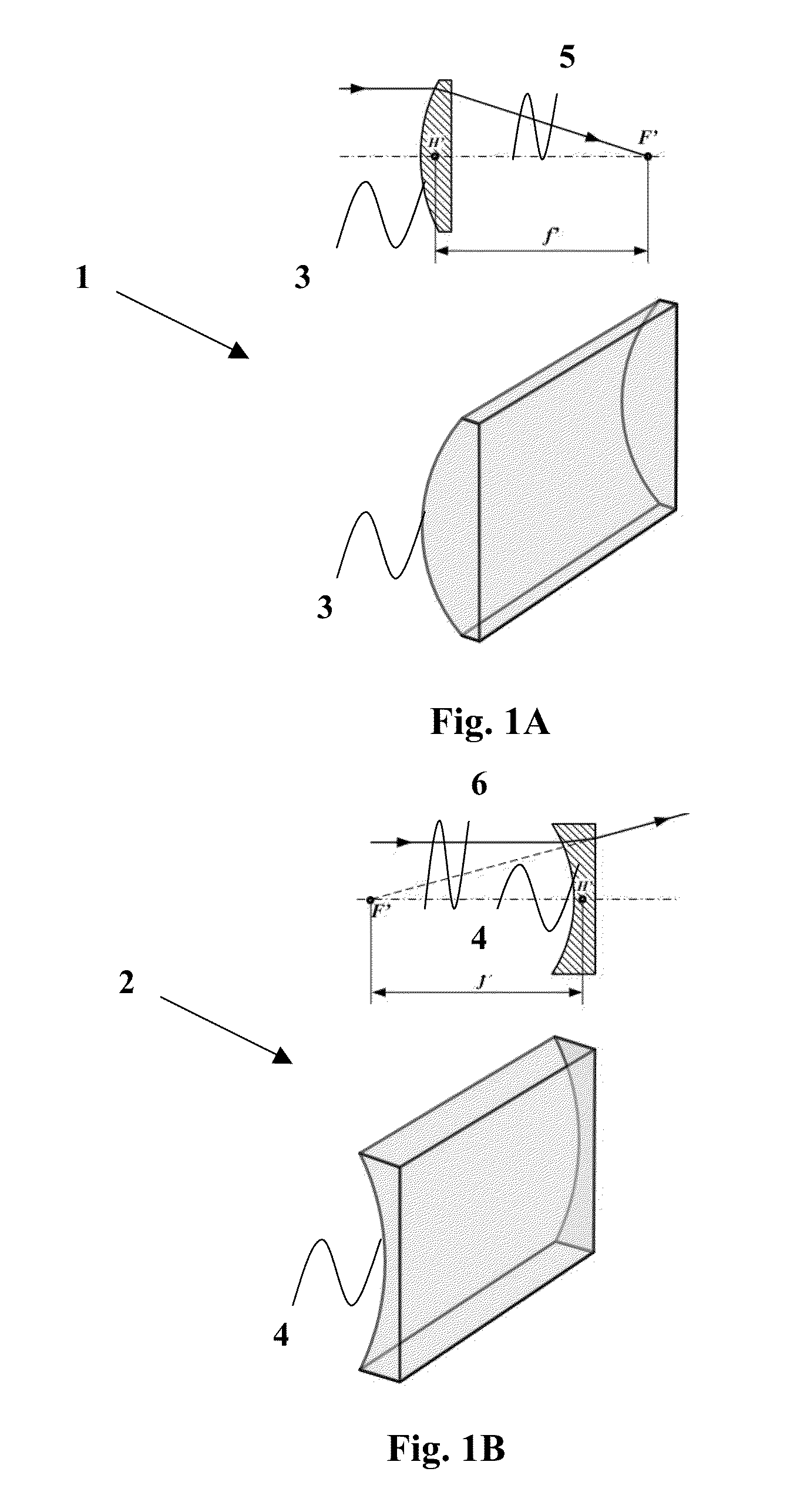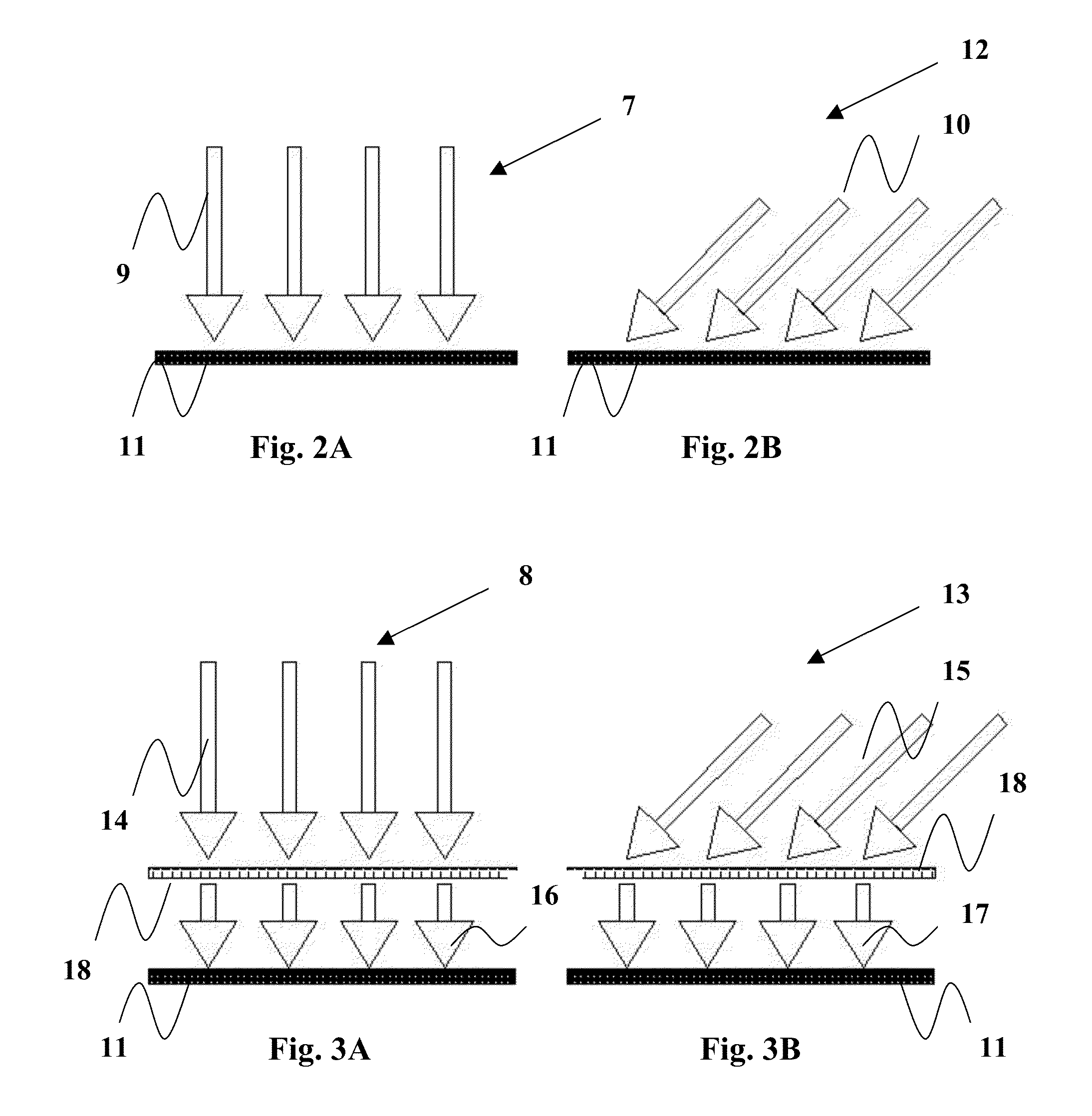Wide angle optical system
- Summary
- Abstract
- Description
- Claims
- Application Information
AI Technical Summary
Benefits of technology
Problems solved by technology
Method used
Image
Examples
Embodiment Construction
[0062]FIGS. 1A and 1B depict a schematic of convex (1) and concave (2) cylindrical lenses, respectively. The lenses focus light which passes through on to a line instead of on to a point, as a spherical lens would. The curved face or faces (3, 4) of the lenses are sections of a cylinder, and focus the image passing through it onto a line (5, 6) parallel to the intersection of the surface of the lens and a plane tangent to it. The lenses compress the image in the direction perpendicular to this line, and leaves it unaltered in the direction parallel to it (in the tangent plane).
[0063]FIGS. 2A and 3A illustrate a schematic representation (7, 8) of a wave front (9, 14) incident at a perpendicular direction relative to a surface of an electromagnetic radiation sensitive device (11). FIG. 2A illustrates the incidence of the perpendicular wave front (9) directly at the surface of the device (11). In such situation, all the incoming radiation is absorbed and processed by the device without...
PUM
 Login to View More
Login to View More Abstract
Description
Claims
Application Information
 Login to View More
Login to View More - R&D
- Intellectual Property
- Life Sciences
- Materials
- Tech Scout
- Unparalleled Data Quality
- Higher Quality Content
- 60% Fewer Hallucinations
Browse by: Latest US Patents, China's latest patents, Technical Efficacy Thesaurus, Application Domain, Technology Topic, Popular Technical Reports.
© 2025 PatSnap. All rights reserved.Legal|Privacy policy|Modern Slavery Act Transparency Statement|Sitemap|About US| Contact US: help@patsnap.com



